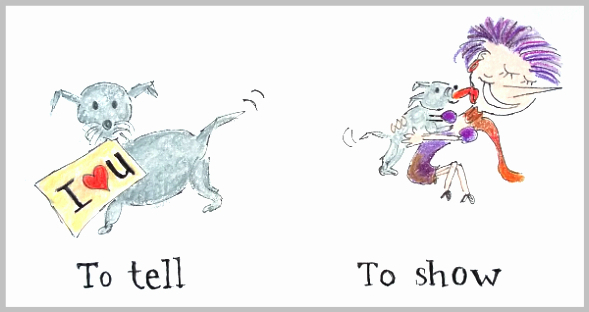#fictionwriting #showortell #emotions #characterstolife
There are possibly a million of articles on this topic in fiction writing. Yet, the debut or relatively new writers struggle heavily in this one area: Show vs Tell. And this puts the writers in a deep contemplation and challenge as they proceed with their manuscript. While, there are cues and hints shown and written in several articles and was told loud several times by many famous authors that Show don’t Tell; is it really that we always have to show and not tell? Otherwise, the manuscript is a disaster? No, not really. Let’s look closer on why that phrase had been told very prominently and why it is important and where to strike the balance.
For that, we first need to understand a little bit more on the characters and their emotions. As a writer, we live, thrive and be friends with the characters. We pretty much do and feel what they feel in the script we are writing(almost always and most likely in showers:-)). The character feels a lot of things- strange, weird emotions that strike the character in different ways at different times.
The character’s reactions and actions are on wheels in your story based on the situations. And if you want the reader to live in the head of a particular character for that one particular scene or multiple scenes that are important to the story, then definitely show. But, for the ones that are traveling distance based on time and are relatively insignificant, yet needed to narrate, you have to tell.
Not all scenes are a show and not all of them are a tell. It is imperative that as a writer, you need to strike the balance and the right balance for your novel to become a page turner.
In order to achieve the balance, keep the following hints in mind when developing your story.
- About 3/4th’s of the book in the character driven plots are showing; not telling.(Not a rigid rule, but gives a general idea, this could be more or less depending on the genre/niche/story plot for your novel)
- Showing increases the word count significantly. When the scene needs to be intensified, that is when you mostly want to show, than tell.
- If sequence of events are important to be told to propel the story forward, but they can be fast forwarded, that is when you basically go for a tell option.
- Consider using metaphors, analogies, similes or use physical gestures of the characters(nonverbal) to create more impact with less word count.
- Keep in mind, when showing, using descriptive writing or trying to make the reader feel the character’s emotions, it tends to be repetitive. Avoid repetition of words, phrases or lines. Remove the lines or words that you think are repeating and read, if without them, the reader can essentially feel the same, then it is most likely overkill for your scene. You can delete such lines.
Hope, these hints help you with your writing journey!!






Leave a Reply